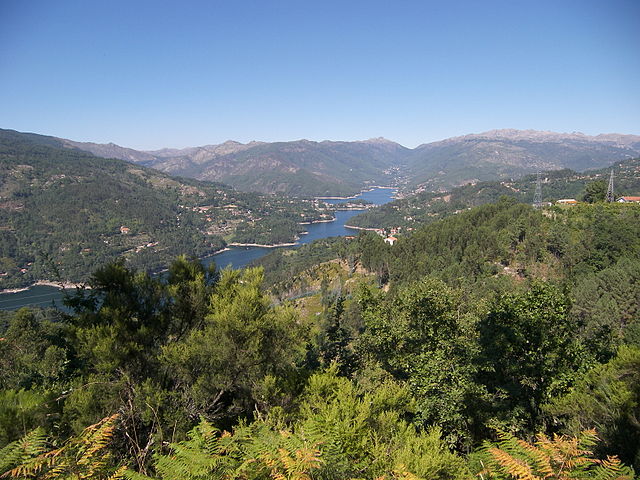Vila do Conde is a municipality in the Norte Region of Portugal. The population in 2011 was 79,533, in an area of 149.03 km2. The urbanized area of Vila do Conde, which includes the parishes of Vila do Conde, Azurara and Árvore, represent 36,137 inhabitants. Vila do Conde is interlinked to the north with Póvoa de Varzim, forming a single urban agglomeration which is a part of the Porto Metropolitan Area. The town is on the Portuguese Way of the Camino de Santiago.
The town of Vila do Conde on the River Ave
A carrack in the harbour of Vila do Conde: many mariners from the village were involved in the epic voyages during the Age of Discovery
The Manueline-style church portico in the Matrice Church along Rua da Igreja, constructed from the wealth of Portuguese discoveries
Matrice Church
The North Region or Northern Portugal is the most populous region in Portugal, ahead of Lisbon, and the third most extensive by area. The region has 3,576,205 inhabitants according to the 2017 census, and its area is 21,278 kilometres (13,222 mi) with a density of 173 inhabitants per square kilometre. It is one of five regions of Mainland Portugal. Its main population center is the urban area of Porto, with about one million inhabitants; it includes a larger political metropolitan region with 1.8 million, and an urban-metropolitan agglomeration with 2.99 million inhabitants, including Porto and neighboring cities, such as Braga, Guimarães and Póvoa de Varzim. The Commission of Regional Coordination of the North (CCDR-N) is the agency that coordinates environmental policies, land-use planning, cities and the overall development of this region, supporting local governments and associations.
The Douro Valley, where port wine is produced
Cávado river in Peneda-Gerês National Park, an area with expressive rainfall.
Northern Littoral Natural Park in Esposende.
The inland Douro Valley area is exposed to hot summers and seasonal aridity.








